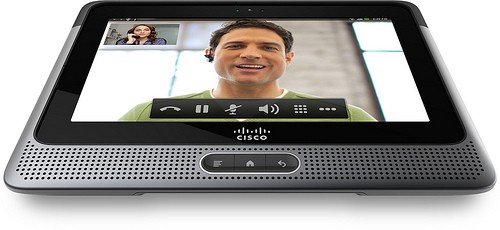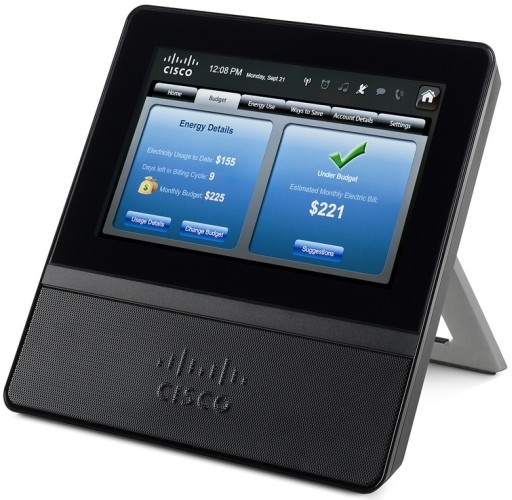Cisco Reveals Android Tablet with 4G-support
Cisco has revealed two tablets this week, one each for business and home environments.
The first is an Android-based device called the Cius. Aimed at businesses, the device allows for access to Cisco applications as well as HD video streaming, real-time video, multi-party conferencing, email, messaging and browsing.
Cisco was a little stingy with information about the product, as it made no mention of processor, RAM or storage options for the Cius. We do know that it features a 7-inch, high-resolution wide screen touch sensitive display; WiFi; 3G (and 4G at a later date); a 5-megapixel camera and a front-facing camera capable of shooting video in 720p; Bluetooth; Mini-USB; and a battery life of eight hours with normal use. It'll come with an optional docking station that packs a telephone, HD DisplayPort and USB ports.
Cisco also announced a second, Linux-based tablet, which the company says is aimed at home energy management. Running Ubuntu and boasting Intel's Atom CPU (1.1GHz), the device, in conjunction with smart power grids, is supposed to help consumers better understand how they consume energy in their home. Cisco reports that studies have shown people reduce their energy use when they're given real-time feedback on how much they're using and at what cost.
With a touchscreen display that measures in at 7-inches, Forbes reports that the WiFi enabled device will pull data from wireless-enabled appliances like dishwashers and lighting systems and allow customers to set rules for their home, like telling the swimming pool heater to turn on at night or the air conditioning to switch off while you're at work.
The price for the tablet is pretty high. At $900 per installation it might be a little too pricey for a lot of people but Cisco says the price may be slashed before they become more widespread. The company plans to test the home energy management system in 100 households over the next 15 months before trying wider deployments.
Get Tom's Hardware's best news and in-depth reviews, straight to your inbox.

Jane McEntegart is a writer, editor, and marketing communications professional with 17 years of experience in the technology industry. She has written about a wide range of technology topics, including smartphones, tablets, and game consoles. Her articles have been published in Tom's Guide, Tom's Hardware, MobileSyrup, and Edge Up.
-
wavetrex Just shut off the bloody appliances and you won't use energy !Reply
The rich and their pointless technologies... pfff.
-
LordConrad frenetic88yea i guess your right. video conferencing and a hd video camera cant be used for anything. just pointless technologies. no way a business or home user could find any practical use for that.....jackassReply
He was talking about Cisco's home tablet, not the cool business version. You're the jackass. -
kelemvor4 If the photo really is how it's going to look, I don't much care for the appearance. Pity because I like the cisco brand, and the specs sound ok (for a tablet).Reply -
nforce4max wavetrexJust shut off the bloody appliances and you won't use energy !The rich and their pointless technologies... pfff.Reply
You know what they say about the rich, "your money makes you stupid".
-
Ever tried to watch a video not shot in at least 720p on a big screen or 42" plus flat screen monitor?? You have to have HD video in order to have a clear picture. There were right to put that in there. If you use the tablet for video conferencing, the HD camera will allow a clear enough picture for the people on the other end to be able to visualize in their conference room your people on their big screen in their conference room.Reply
-
The versatility of Linux and Ubuntu run Cius tablet is to gonna be soon demonstrated. Cius has similar or close features as those offered by Apple's iPad 3/4G. But as has been demonstrated before, Linux and Ubuntu are superior OSes than iOS4 or Windows mobile operating systems. I have used three of these operating systems and i clearly prefer Linux or its Ubuntu version. However, the home appliance management tablet at $900 is to my viewpoint a bit pricey for the average homeowners. don't you think so?Reply

